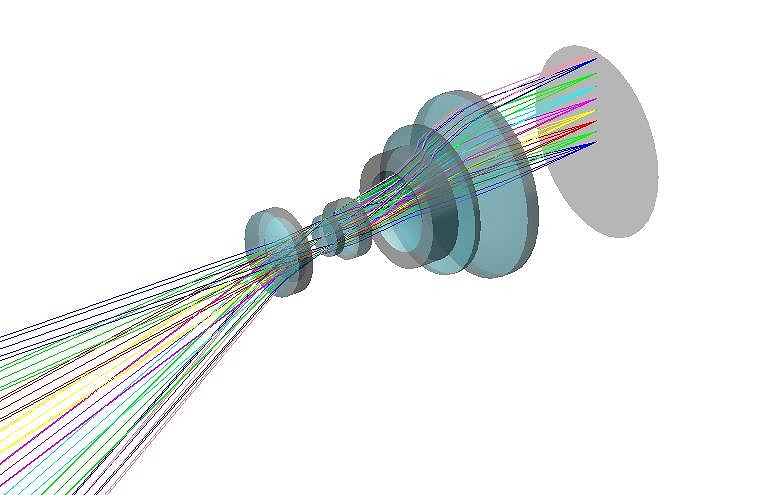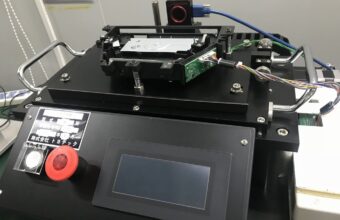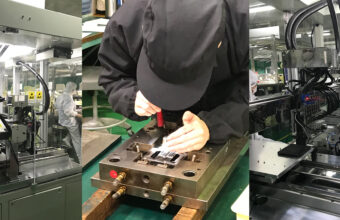What is Optical Design?

Have you ever heard of the term “optical design”? Optical design is the process of designing an entire optical system by combining lenses, mirrors, and other components. Although it is not widely known, Japan’s world-leading optical design technology is used in every field from daily life to industrial fields. The following is a comprehensive explanation of the features, types, components, and applications of optical design.
What is Optical Design?
“Optical design” refers to the design of an entire optical system by combining lenses, mirrors, and other components. Most of the design is about the lens itself, but since it also includes the design of reflectors and prisms, the term is often referred as “optical design” instead of “lens design”.
There are two stages in the optical design process: the specification design stage (defining the requirements) , where the specifications of the optical system itself are considered and set, depending on what functions and performances are required, and the detailed design stage, where the materials and shapes are specified based on the specifications.
In the specification design stage, the required specifications for the functional unit is converted/allocated to the specifications of the individual functional components such as the optical system and the photosensor. The individual specifications will be designed to meet the required specifications of the original functional unit when they are combined. The optical system has unique specification items such as focal length and f-number, and requires optical expertise.
In the detailed design stage, the number of lenses, other optical components such as mirrors, the shape and thickness of the surfaces, and the placement of each component are optimized based on the optical specifications. At the same time, the workability of the optical components and the method of holding and fixing them are also taken into consideration as we proceed with the design.
As you can see from the explanation above, optical design is a high-level design that requires not only knowledge of optics and design skills, but also a wide range of knowledge regarding elemental components such as photodetectors and light sources, materials, processing methods, and mechanical design. Japanese Optical Design has made great technological breakthroughs along with the rise of the camera industry after World War II, and based on this technology, it has been applied to various fields to reach the highest level in the world.
Various Optical Designs
Optical systems are functional components that control light, and can be classified into two main types. One is imaging optics, and the other is illumination and condensing optics. The two types have different indexes and methods. Imaging optics, as it literally means, has the function of imaging the light coming from an object onto a photodetector.
The photodetector is often a solid-state image sensor consisting of many pixels, like the image sensor of a digital camera, but it can also be the human eye(retina), as in a telescope. Design indexes include image sharpness, contrast, and distortion.
On the other hand, lighting and condensing optics are required to properly project light emitted from a light source onto an object, such as room lighting or stage spotlights. Distribution of illuminance, uniformity and condensing ability will be the indexes for these kind of optics. In some cases, condensing optics are used together with light receivers, such as parabolic mirrors for solar light condensation.
As you can see, there are two main types of optical design, but if you classify by the application of the optical system, there are many different types of optical design. The following is only a part of the different types for each application.
Optical Design:
● for object imaging (digital cameras, smartphones, etc.)
● for object recognition (OCR, security, etc.)
● for distance measurement (LiDAR, etc.)
● for the projection (projectors, steppers, etc.)
● for uniform illumination (desk light, etc.)
● for ophthalmoscopy (loupe, glasses, microscope, telescope, binoculars, etc.)
● for energy focusing (sunlight focusing, laser processing machines,
● medical equipment, etc.)
Optical design differs for these applications. For example, optical design for object imaging and for object recognition sounds similar, but while the former is the design of an optical system that can capture various objects in various lighting environments and distances, the latter is the design of a high quality
optical system for a specific object in a specific lighting environment and distance.
Even if the application and purpose are the same, the optical design required for each product is different. For example, loupes and microscopes are the same in that they are used to magnify and observe small objects with the human eye, but the magnification rate and application scene are very different, and the required performance, size, price, and other aspects of optical design are also very different.
The Elements of Optical Design
Optical design handles a variety of components depending on the purpose.
For example, the following are some of the components.
● Lens Material: Plastic, glass, and infrared-transparent material, etc.
● Optical Elements: lenses, mirrors, prisms, diffraction gratings, etc.
● Coatings: metal mirrors, multilayer filters, etc.
● Light source: Halogen lamp, LED, laser, etc.
● Photodetectors: Image sensors(CMOS,CCD), etc.
By properly handling these elements, a variety of optical designs can be made.
TOYOTEC, the operator of Optical Design Technology Navigator, provides support in terms of both optimal optical design and high-precision manufacturing technology in accordance with the customer’s operating environment and requirements.
Optical Design Methods
TOYOTEC uses a software dedicated in optical design. This software is equipped with a function to track light rays passing through a lens or mirror surface by applying Snell’s law. By tracking a large number of rays, it is possible to evaluate the state of image formation and condensation.
We proceed with the design using functions to control the shape of the lens and mirror surface and the thickness of the lens targeting this evaluation detail. Of course, it goes without saying that the knowledge of optics and skill for the software are necessary to properly execute the optical design.
TOYOTEC, which operates Optical Design Technology Navigator, uses Zemax and Code V software for optical design.
Optical Design Applications
Your daily life is filled with products that use a variety of optical designs. For example, smartphone cameras, which many of us carry around with us, are a typical example of a product that uses optical design to highly optimize all specifications such as thinness, weight, performance, and price. Optical design technology is also used in many other areas of our daily lives, such as eyeglasses, cameras, security cameras, copy machines, automated driving, and medical equipment.
In the industrial field, optical design is used in public transportation, warehouses, sensors, electron microscopes. It is even used in the space field,
contributing to the further development of science and technology. In addition, we are in the midst of advanced technological advances such as 5G and CASE, and the need for optical sensors and optical systems is expected to increase further in the future.
Optical Design Technology Navigator will solve all your optical design needs!
TOYOTEC, operator of the Optical Design Technology Navigator, is an all-around optical manufacturer with proficiency in optical, mechanical, and electronical technology. We ca design and develop products from scratch based on our customers’ needs, and provides integrated support from design to productization.
If you are thinking about something like, “If only there was a product like this…”, or, “Is it possible to do these kind of things with lenses?”, Optical Design Technology Navigator, a website operated by a group of optical design professionals, is the place to go. If you have any questions about optical design, please feel free to contact us at Optical Design Technology Navigator.
 JP Phone: 0533-85-3000
JP Phone: 0533-85-3000 Kontaktiere uns
Kontaktiere uns Language:
Language: 



-340x220.jpg)